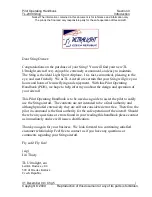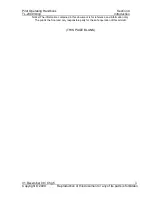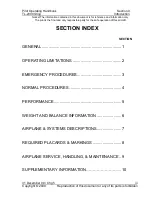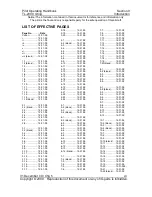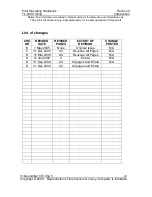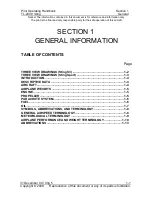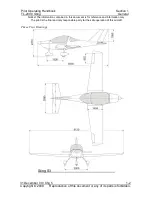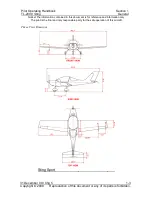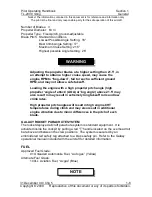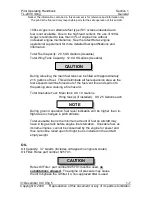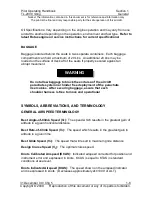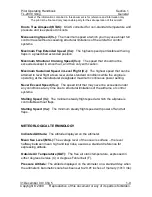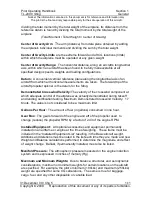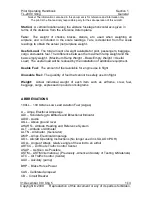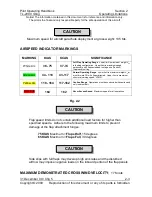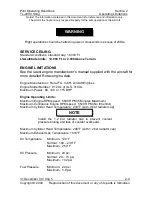
Pilot Operating Handbook
Section 1
TL-2000
Sting
General
Notice! The information contained in this document is for reference and information only.
The pilot is the final and only responsible party for the safe operation of this aircraft.
31 December 09 / Chg 5
1-6
Copyright © 2009 Reproduction of this document or any of its parts is forbidden.
Number of Blades: 3
Propeller Diameter: 63 In
Propeller Type: Fixed-pitch, ground-adjustable
Blade Pitch: Standard Conditions
Lowest Possible Angle Setting: 16°
Best Climb Angle Setting: 17°
Maximum Cruise Setting: 21.5°
Highest possible Angle Setting: 26°
Adjusting the propeller blades at a higher setting than 21.5°, in
an attempt to obtain a higher cruise speed, may cause the
engine RPM to “bog-down”, fail to reach a sufficient ground
RPM, and may not allow a safe takeoff.
Loading the engine with a high propeller pitch angle (high
propeller ‘angle of attack’ (AOA) or ‘big angle’) above 21.5° may
also result in may result in extremely long takeoff rolls and low
climb rates.
High propeller pitch angles will result in high engine CHT
temperatures during climb and may also result in additional
engine vibration due to minor differences in the pitch of each
blade.
GALAXY ROCKET PARACHUTE SYSTEM
The rocket deployed aircraft parachute system is standard equipment. It is
activated inside the cockpit by pulling a red “T” handle located on the overhead roll
bar above and between the crew positions. The system is secured by an
embroidered red safety tag attached to a brass safety pin. Refer to the Galaxy
operational manual included with the aircraft for detailed information.
FUEL
Approved Fuel Grade:
91 Unleaded Automobile Fuel, “Auto gas” (Yellow)
Alternate Fuel Grade:
100LL Aviation Fuel, “Avgas” (Blue)
WARNING
NOTE


